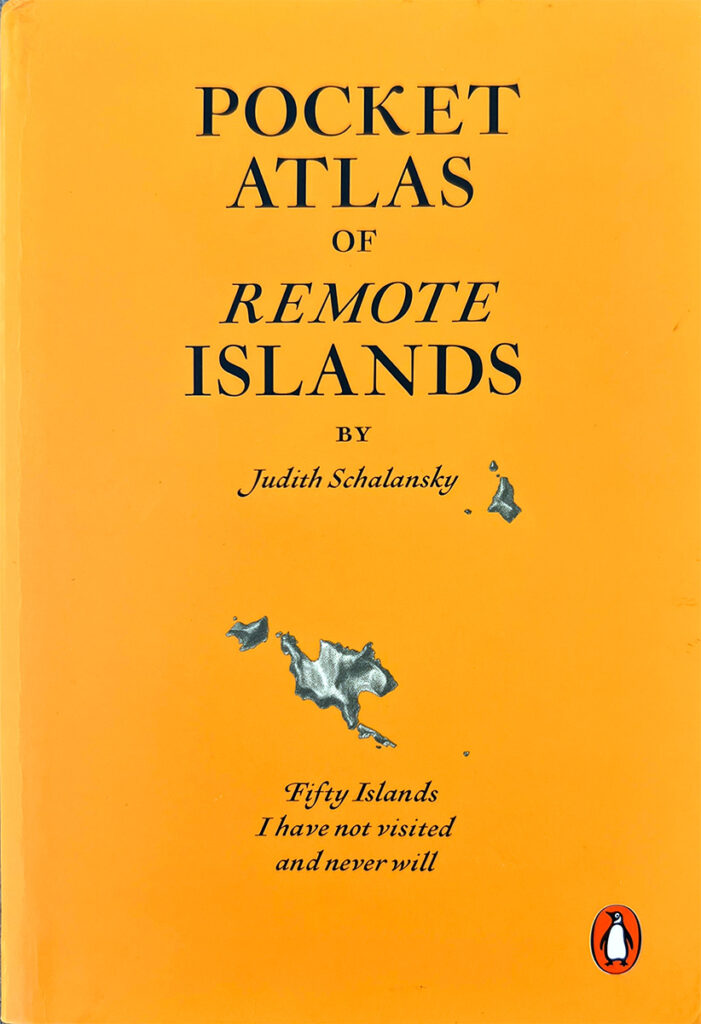A delightful little book, Judith Schalansky’s Pocket Atlas of Remote Islands allows the armchair traveller to vista exotic faraway locales and dream unperturbed of white sandy beaches and palm trees softly swaying in a cool wind whilst overlooking the surrounding seas.
Mrs Schalansky and the ‘fifty islands I have not visited and never will’ ranges from remote Clipperton Island, an uninhabited French possession in the eastern Pacific to Tristan da Cunha, a British outpost in the South Atlantic only sporadically visited by passing yachts whose 254 inhabitants tend potato patches and sometimes pluck a few lobsters out of the sea.

The writer was born and raised in East Germany before the reunification lifted the orders and allowed unencumbered travel. She spent her youth pouring over maps and atlases, imagining life and places other than the utilitarian experience offered at home.
Each of the fifty remote islands has a captivating story to tell. The reader meets intrepid explorers, marooned sailors and slaves, lost botanists, and assured castaways. The atlas may spark an interest in more island tales such as those by Jack London, Joseph Conrad, James Michener or the utterly spellbinding life of Kapitänleutnant Felix von Luckner, captain of the German WW I raider See Adler whose adventures in the South Pacific exceed even the most fertile imagination.
Closer to home, Mrs Schalansky has the reader visit forlorn St Kilda, far into the North Atlantic on the outermost edge of the United Kingdom, where one church, four houses, and sixteen cottages are all that is left of a once thriving community that could trace its origins back two millennia, with archaeological evidence pointing to a human presence in the Iron Age around 4,000 BC.
In 1930, the remaining 36 islanders were evacuated at their own request, leaving behind two endemic species of sheep: the Neolithic Soay and the Iron Age Boreray breeds. Diseases introduced from the mainland, and the contamination of fields by lead and other pollutants, caused most newborns to die after only a few days. The last St Kildan, Rachel Johnson, died in 2016 at the age of 93. She was eight when the evacuation took place.
Book details
- Pocket Atlas of Remote Islands by Judith Schalansky
- Penguin 2012
- ISBN 978-1-8461-4349-6
- 240 pp
